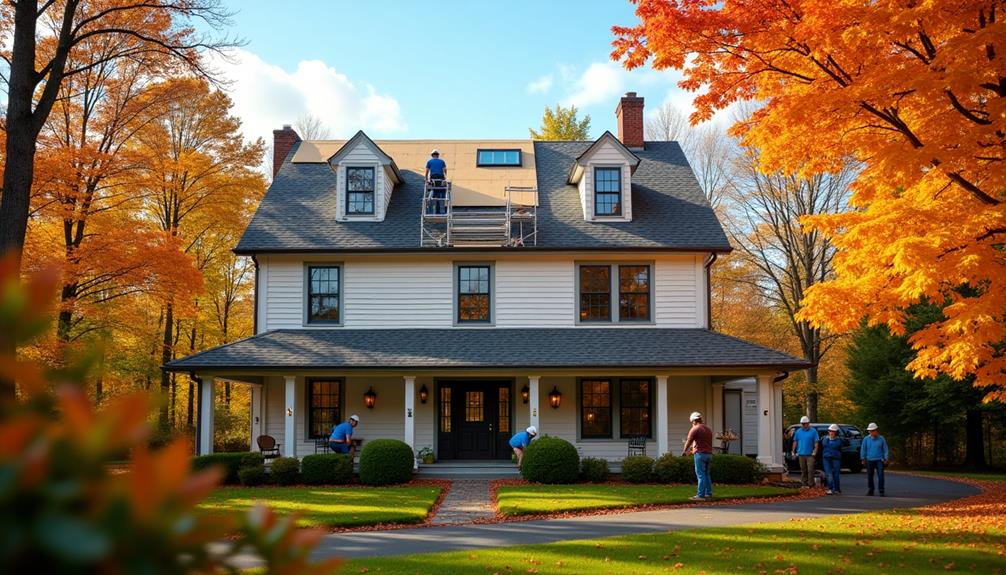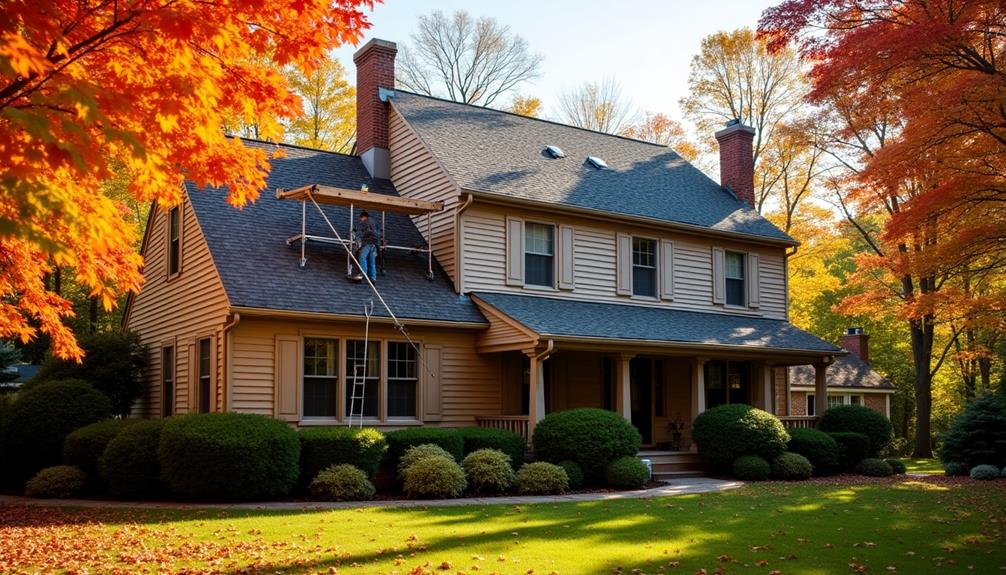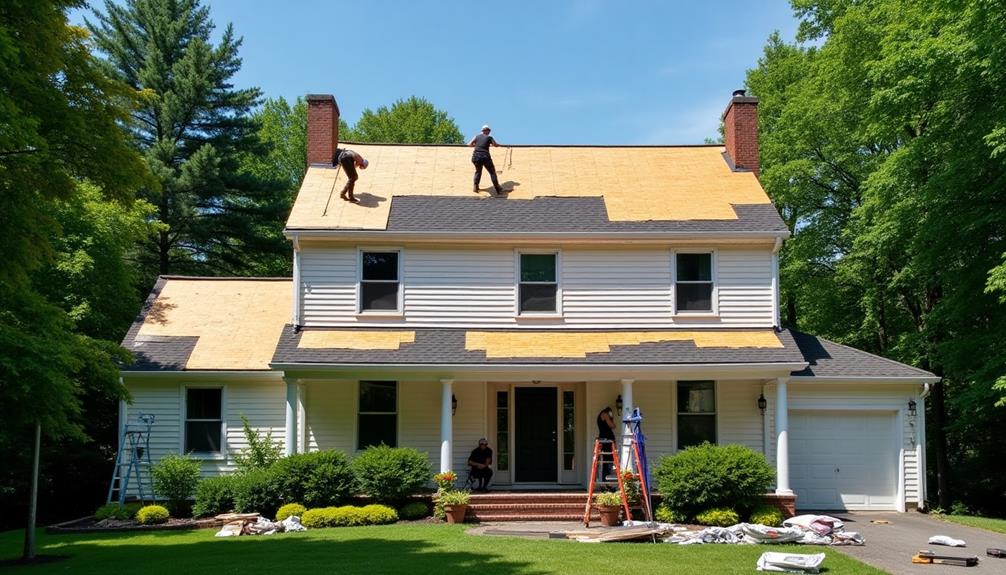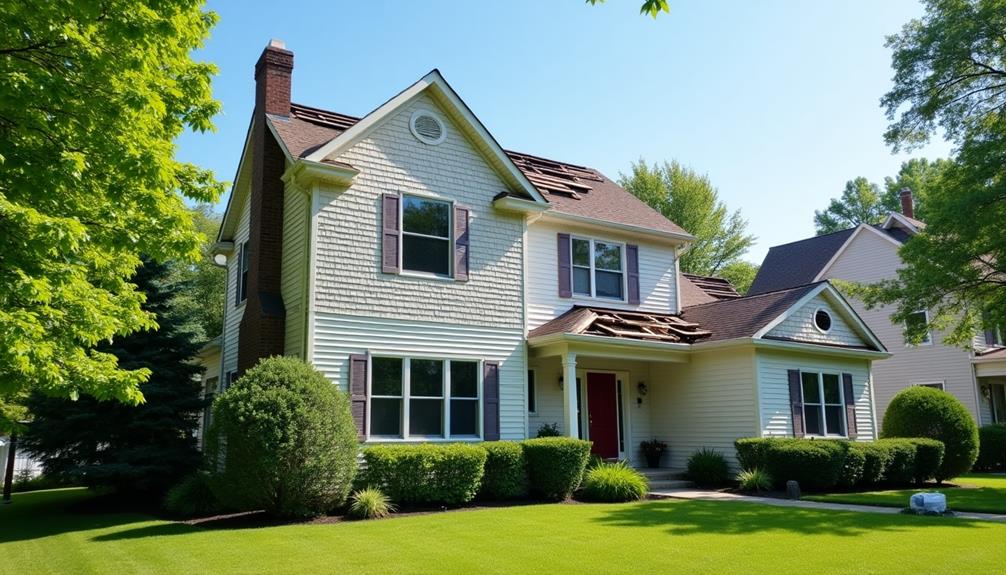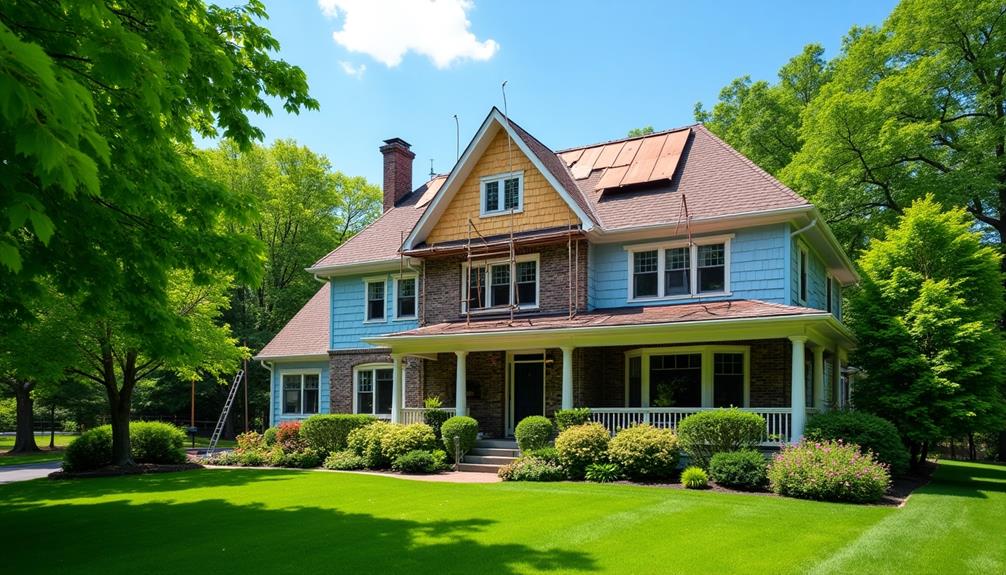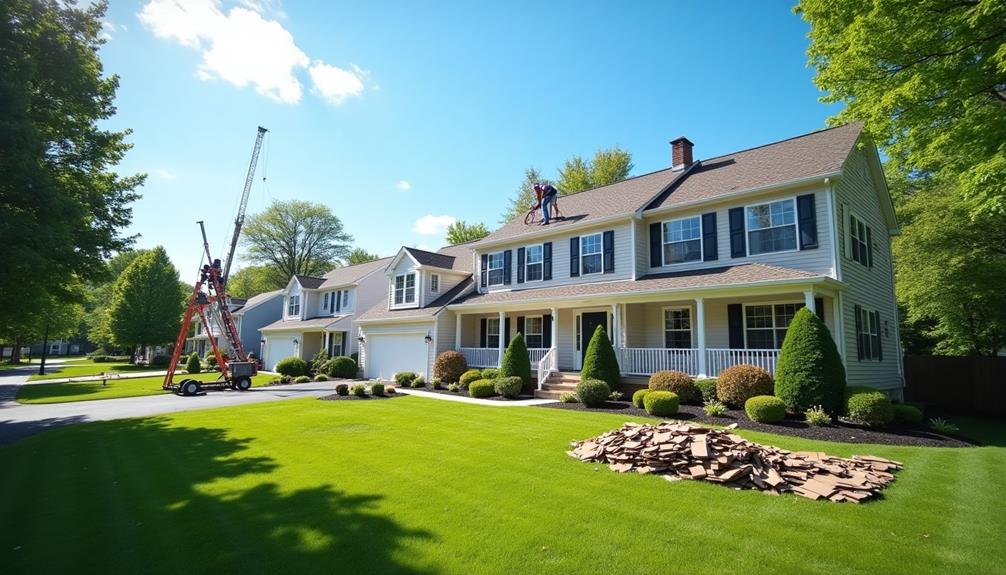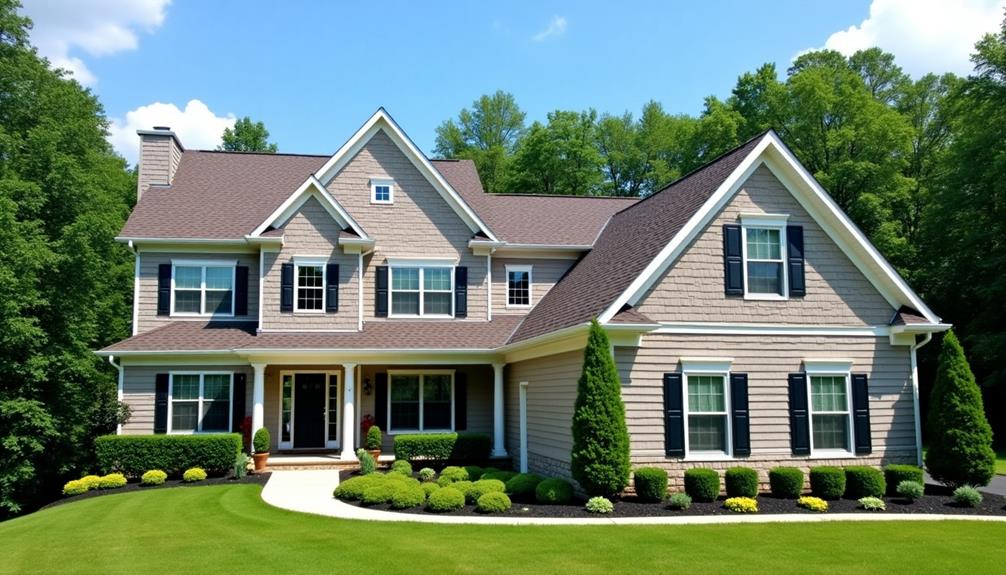When considering roof replacement in Pleasantville, NJ, it's crucial to assess your roof's condition. Look for signs like missing shingles, water stains, or granules in your gutters. Modern materials, from cost-effective asphalt shingles to enduring metal roofing, offer various benefits. Choosing the right contractor is vital, so verify their credentials and experience. The replacement process includes an initial inspection, material selection, and proper installation techniques that ensure longevity. Budgeting is essential too, as material and labor costs vary significantly. Explore your options to make informed decisions about your roof replacement project. You may find additional insights beneficial.
Signs You Need a Roof Replacement
Recognizing the signs that you need a roof replacement can save you from costly repairs down the line. One of the primary indicators is the age of your roof. Most roofs have a lifespan of 20 to 25 years, depending on the materials used. If your roof is nearing this age, it's prudent to start monitoring its condition closely.
Look for visible signs of wear, such as missing or curling shingles, which can indicate deterioration. Water stains on your ceiling or walls often signal leaks, suggesting that your roof's integrity is compromised.
Additionally, consider the weather impact in your area. Frequent storms, heavy snowfall, or high winds can accelerate roof wear and tear.
Moss or algae growth on shingles may trap moisture, leading to further degradation. If you notice granules in your gutters, this could mean your roof is losing its protective layer.
Regular inspections can help you assess these issues early. If you identify multiple warning signs, don't hesitate to consult a professional to evaluate whether a roof replacement is necessary. Staying proactive can protect your home and help you avoid unforeseen expenses.
Choosing the Right Materials
When it comes to choosing the right materials for your roof replacement, understanding the options available ensures you make an informed decision.
You'll want to consider various materials, each with distinct benefits. Asphalt shingles are popular for their cost-effectiveness and decent material durability, making them a common choice for many homeowners.
Alternatively, metal roofing offers superior longevity and can withstand harsh weather conditions, providing excellent material durability over time.
If aesthetic appeal is a priority, consider slate or tile roofing. These materials not only enhance the visual charm of your home but also boast impressive durability. However, they're more expensive and may require additional structural support due to their weight.
Another option is synthetic roofing materials, which combine durability and aesthetic appeal without the high cost of traditional materials. They mimic the look of wood or slate while offering improved resistance to weathering.
Ultimately, balancing material durability and aesthetic appeal is key to selecting the best roofing material for your home.
Assess your budget, climate, and personal style preferences to make a choice that meets your needs for years to come.
Finding Qualified Contractors
Selecting the right roofing materials is just the beginning of your roof replacement journey; the next step is finding qualified contractors who can bring your vision to life. Start by verifying contractor credentials, such as licenses, insurance, and certifications. These credentials ensure that the contractor meets local regulations and industry standards, protecting you from potential liabilities.
Next, evaluate their experience, especially with projects similar to yours. A contractor with a proven track record in roof replacements will understand the nuances of different materials and methods, minimizing risks during the installation process. Ask for references and check online reviews to gauge their reliability and quality of work.
Discuss project timelines upfront. A qualified contractor should provide a clear timeline for your project, detailing each phase from preparation to completion. This clarity helps you manage expectations and ensures that the work progresses smoothly.
The Roof Replacement Process
Before diving into the roof replacement process, it's crucial to understand the various stages involved to ensure a successful outcome. This process begins with a thorough inspection of your existing roof, assessing its condition and determining the roof lifespan. Once you've chosen the right materials, the installation techniques come into play, ensuring your new roof is both durable and aesthetically pleasing.
Here's a breakdown of the key stages involved:
| Stage | Description | Importance |
|---|---|---|
| Initial Inspection | Assessing the current roof condition | Identifies necessary repairs |
| Material Selection | Choosing appropriate roofing materials | Affects longevity and style |
| Installation | Applying installation techniques correctly | Ensures proper function |
Each stage is vital in achieving a successful roof replacement. You'll want to ensure that your contractor follows best practices during installation, as this directly impacts the overall roof lifespan. By understanding these stages, you'll be better prepared to tackle the roof replacement process and ensure your home is protected for years to come.
Cost Considerations and Budgeting
Budgeting for a roof replacement involves several key cost considerations that can significantly impact your overall expenses.
First, you'll want to assess the type of materials you plan to use. Options range from asphalt shingles to metal roofing, each with differing price points and longevity. Choosing high-quality materials may incur a higher upfront cost but can lead to long-term savings through durability and reduced maintenance.
Next, consider labor costs, which can vary based on the complexity of the installation. Hiring a reputable contractor typically ensures a better quality installation, which is crucial for avoiding future repairs.
Don't forget to factor in potential permits or inspections required by local regulations.
Additionally, explore financing options if you're faced with high upfront costs. Many roofing companies offer payment plans or financing solutions that can ease the financial burden. Balancing your budget with these financing options can help you manage immediate expenses while investing in a roof that provides security for years to come.
Ultimately, understanding these cost considerations will empower you to make informed decisions, ensuring you achieve both quality and value in your roof replacement project.

